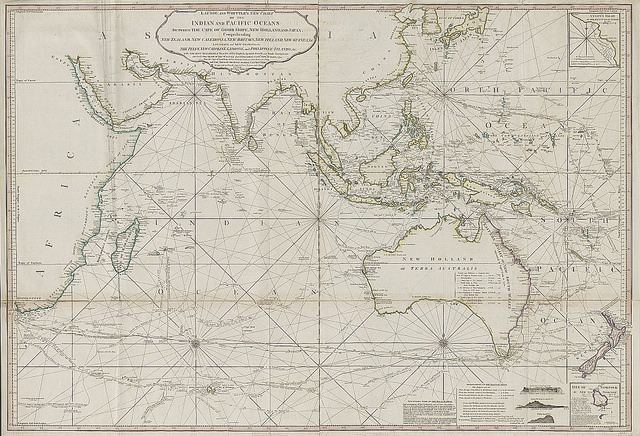Australia, India and strategic convergence
Posted By Graeme Dobell on July 6, 2015 @ 06:00
For India and Australia, a striking new reality is in view. One of the great negatives in India’s traditional view of Australia is turning into a positive. Suddenly Australia’s alliance with the US makes us look interesting. Australia’s alliance addiction no longer counts against Canberra.
For decades, India saw Australia as little more than a pale reflection of US policy. At its most dismissive, this Indian perspective saw a US stooge that would do as Washington wished.
New Delhi may not yet give Canberra much credit for independent thought or action. But being rusted on to the US no longer causes India to dismiss Australia as essentially irrelevant in the geopolitical and defence discussion.
India seeks greater bilateral defence cooperation with Australia as an Indian Ocean actor with some useful assets. See this, partly, as India slowly responding to Australia’s long-held aspirations to improve naval cooperation. More importantly, it reflects India’s rising capabilities which are starting to lift to match India’s core beliefs about its central role in the Indian Ocean (one of many effects of the China challenge).
India is reaching towards a quasi-alliance with the US, having already created the forms of a strategic partnership; in the slow moving realms of strategic realignments, this US–India partnership has been built in double-time.
Broadening the lens from bilateral to multilateral is where the reality shift shows vividly. The multilateral focus brings in the strongest US allies in the region—Japan and Australia. What for so long was a big negative when India bothered to think about Australia is turning into a positive.
An India in the process of arriving at the top wouldn’t want to see only two chairs reserved for the US and China in the throne room. Concert rather than condominium is more attractive. And the rest of Asia is equally interested in a soft concert to get more chairs in the command space.
India’s choices are not as broad as it proclaims. Forget non-alignment—another time, another international system, fading into the last century. India is a committed power. It must be committed to making the Indo-Pacific system work because India will have a huge stake in the system (however weak the concert may be). India can’t stand aloof. A lot of options are really impossible dead ends. India can’t and won’t align with China; their destiny is as rivals. The old Cold War friend, Russia, is a difficult comrade today. If Russia leans towards anyone in Asia, it will be China.
India can’t stand aloof from the emerging Indo-Pacific security system. The choice for India is how close it stands to the US, Japan and even Australia; it’s a matter of degree, not choice.
Acknowledge that this description of India’s narrowing strategic choices sounds nothing like the foreign policy narrative coming out of New Delhi. This story is a happy rejoicing that India, on its way to being rich, can now function as an independent superpower, picking and declining as it wishes. Imagine a non-aligned giant with rainbow options. India always talks a great game. What it actually does, though, is usually tougher and tighter.
For a window on this, go back to a long ago Australian High Commissioner to New Delhi, who recorded this reflection on the difference between allied Australia and non-aligned India in approaching international affairs:
There was not much in India’s policies to emulate. Yet, wrong-headed and hypocritical as India’s policies sometimes were, one’s mind was gripped by the undeviating direction of India towards national self-interest without concession to sentiment towards others, or to the “loyalty” so evident in Australian official policies towards our “traditional friends”.
The words are from one of the great Canberra mandarins, Sir Arthur Tange [2], who served in India for five years after his time as secretary of the External Affairs Department (1954–65) and before taking the top job in the Defence Department (1970–79).
Tange would be just as acid today on the costs to Oz of its loyalty habit. As the flintiest of realists, Tange would see India acting true to form, being typically hard-eyed about the future of the Indo-Pacific. Such a realist view will open some interesting opportunities for Canberra and New Delhi. India still sees Australia as having the default instincts of a US stooge. But being close to the US is now the strategic choice India is embracing. The stooge will get more of a hearing, if not much respect. Australia and India have a lot to play for. And for the first time ever, the demands of the international system could drive them towards each other, not apart.
Article printed from The Strategist: https://www.aspistrategist.org.au
URL to article: https://www.aspistrategist.org.au/australia-india-and-strategic-convergence/
URLs in this post:
[1] Image: http://www.aspistrategist.org.au/wp-content/uploads/2015/07/13447785765_180baab984_z.jpg
[2] Sir Arthur Tange: http://epress.anu.edu.au/dpm_citation.html
Click here to print.
